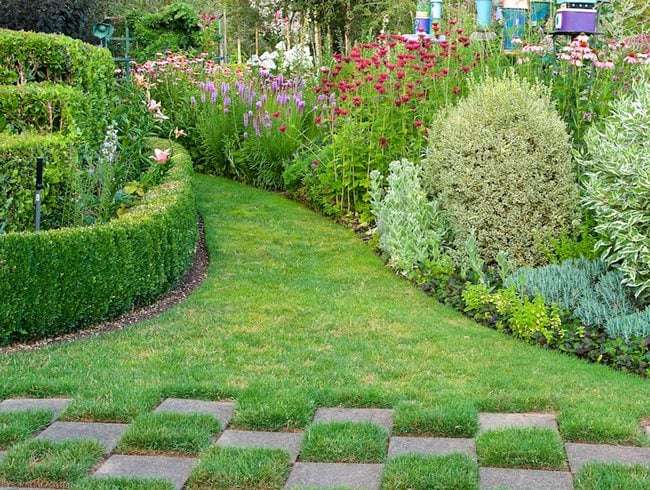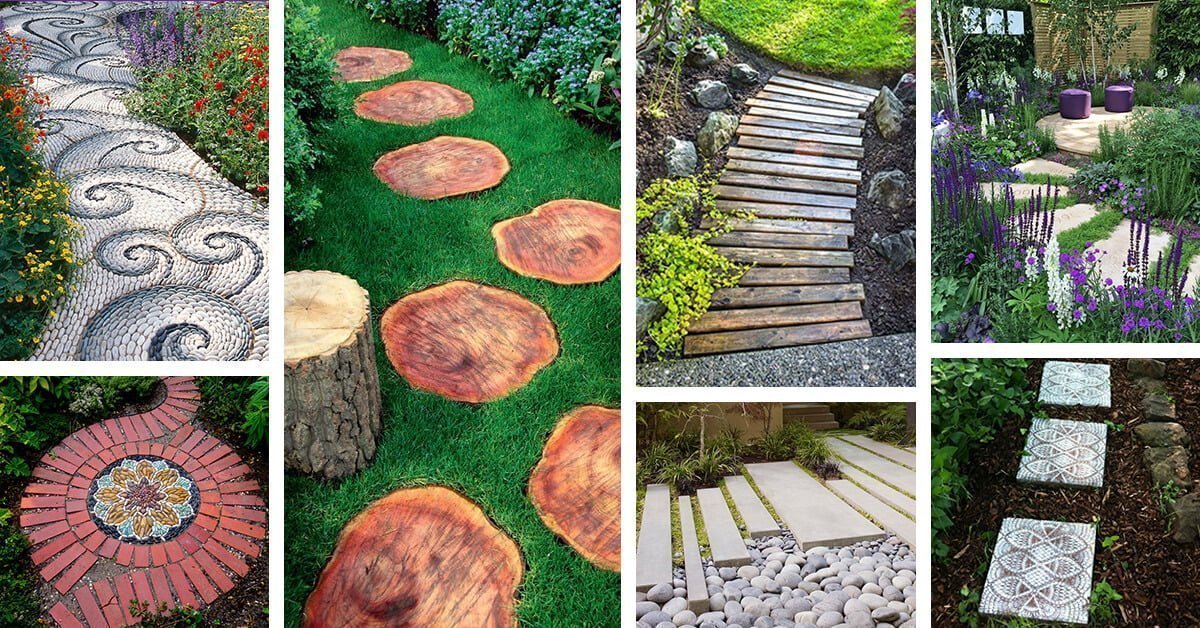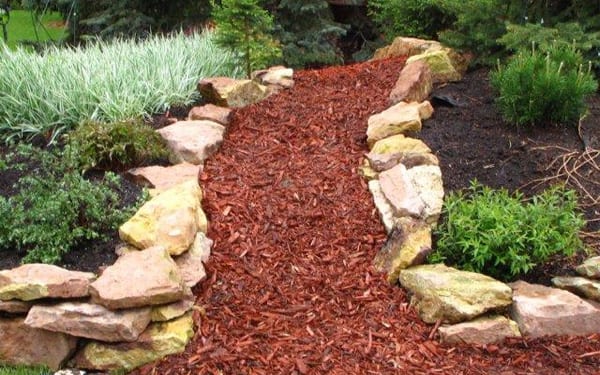Mulch Pathway: The Easy Way To Add Beauty And Function To Your Yard
Mulch Pathway: The Easy Way to Add Beauty and Function to Your Yard
Mulch pathways are a great way to add beauty and function to your yard. They are easy to install, relatively inexpensive, and can be customized to match your home's style and the plants in your garden.
In this blog post, we will discuss the benefits of mulch pathways, how to choose the right mulch for your needs, and how to install a mulch pathway.
Benefits of Mulch Pathways
There are many benefits to using mulch pathways in your yard. Here are a few of the most important ones:
- Mulch pathways can help to suppress weeds. Weeds can be a major nuisance in any garden, but they can be especially problematic in pathways. Mulch helps to smother weeds by blocking out sunlight.
- Mulch pathways can help to improve drainage. Mulch helps to absorb water and prevent it from running off into your yard. This can help to prevent erosion and keep your plants healthy.
- Mulch pathways can help to retain moisture. Mulch helps to slow down evaporation, which can help to keep your plants' roots moist. This is especially important during hot, dry weather.
- Mulch pathways can help to improve the appearance of your yard. Mulch can add color and texture to your yard, and it can help to make your pathways look more inviting.
- Mulch pathways are relatively easy to install and maintain. You can install a mulch pathway yourself with a few simple tools. And once it's installed, you only need to add more mulch every few years.
Choosing the Right Mulch
There are many different types of mulch available, so it's important to choose the right one for your needs. Here are a few things to consider when choosing mulch:
- The type of plants in your garden. Some types of mulch, such as pine needles, can be acidic and can damage plants that prefer alkaline soil.
- The climate in your area. Some types of mulch, such as bark chips, can break down quickly in hot, humid climates.
- The amount of foot traffic your pathway will receive. If your pathway will receive a lot of foot traffic, you'll need to choose a mulch that is durable and won't compact easily.
Some of the most popular types of mulch for pathways include:
- Pine needles. Pine needles are a natural and attractive mulch that is relatively inexpensive. They are also good at suppressing weeds and improving drainage.
- Wood chips. Wood chips are another natural and affordable mulch option. They are good at suppressing weeds and improving drainage, but they can break down quickly in hot, humid climates.
- Bark chips. Bark chips are a durable and long-lasting mulch option. They are good at suppressing weeds and improving drainage, and they can add a touch of elegance to your pathway.
- Gravel. Gravel is a low-maintenance and durable mulch option. It is not as effective at suppressing weeds as other types of mulch, but it can add a modern and stylish look to your pathway.
Installing a Mulch Pathway
Once you have chosen the right mulch, you can start installing your pathway. Here are the basic steps involved:
- Mark out the area of your pathway with stakes and string.
- Remove any existing vegetation from the area.
- Add a layer of landscape fabric to the area. This will help to suppress weeds and prevent the mulch from sinking into the soil.
- Add a layer of mulch to the area. The thickness of the mulch layer will depend on the type of mulch you are using.
- Rake the mulch smooth and evenly.
That's it! You now have a beautiful and functional mulch pathway in your yard.
Conclusion
Mulch pathways are a great way to add beauty and function to your yard. They are easy to install, relatively inexpensive, and can be customized to match your home's style and the plants in your garden.
If you're looking for a way to improve the look and feel of your yard, a mulch pathway is a great option. With a little planning and effort, you can create a mulch pathway that you'll enjoy for years to come.
Are you looking for a beautiful, low-maintenance way to add a pathway to your garden? If so, mulch may be the perfect solution for you. Mulch is a natural material that can be used to create a variety of pathways, from simple walkways to meandering trails. It's also a great way to suppress weeds, retain moisture, and improve the appearance of your garden.
If you're interested in learning more about mulch pathways, I recommend visiting Garden Wiki. This website has a wealth of information on the topic, including:
- Different types of mulch and their benefits
- How to choose the right mulch for your needs
- How to install a mulch pathway
- Maintenance tips for mulch pathways
I also recommend checking out the website's blog for more inspiration and ideas. The blog features articles on a variety of gardening topics, including mulch pathways.
FAQ of mulch pathway
1. What is a mulch pathway?
A mulch pathway is a walkway or path in your garden that is covered with mulch. Mulch is a layer of organic material, such as wood chips, bark, or leaves, that is spread over the soil. It helps to suppress weeds, retain moisture, and improve the overall health of your plants.
2. What are the benefits of using a mulch pathway?
There are many benefits to using a mulch pathway in your garden. Some of the most important benefits include:
- Suppresses weeds. Mulch creates a physical barrier that prevents weeds from germinating.
- Retains moisture. Mulch helps to keep the soil moist, which is essential for plant health.
- Improves soil structure. As mulch decomposes, it adds organic matter to the soil, which helps to improve drainage and aeration.
- Attracts beneficial insects. Mulch provides a habitat for beneficial insects, such as earthworms and ladybugs, which help to control pests.
- Improves the appearance of your garden. Mulch can add a touch of color and interest to your garden, and it can help to define the space.
3. What type of mulch should I use for my pathway?
The type of mulch you use for your pathway will depend on your climate and the plants in your garden. Some common types of mulch include:
- Wood chips: Wood chips are a versatile mulch that can be used in a variety of climates. They are relatively inexpensive and easy to find.
- Bark mulch: Bark mulch is another popular choice. It is more expensive than wood chips, but it has a longer lifespan.
- Pine needles: Pine needles are a good choice for acid-loving plants, such as rhododendrons and azaleas. They are also relatively inexpensive.
- Straw: Straw is a good choice for areas with heavy foot traffic. It is also a good choice for gardens with pets, as it is less likely to attract insects.
- Leaf mold: Leaf mold is a natural mulch that is made from decaying leaves. It is a good choice for gardens with a natural look.
4. How thick should I layer my mulch?
The thickness of your mulch layer will depend on the type of mulch you are using. In general, you should layer your mulch between 2 and 4 inches thick.
5. How often should I reapply mulch to my pathway?
You should reapply mulch to your pathway as needed. The frequency will depend on the type of mulch you are using and the amount of foot traffic your pathway receives. In general, you should reapply mulch every year or two.
Image of mulch pathway
- A wide mulch pathway with a border of river rocks. The mulch is a light brown color and the rocks are a dark gray color. The pathway leads to a wooden deck.

- A narrow mulch pathway with a border of flowers. The mulch is a dark brown color and the flowers are a variety of colors. The pathway leads to a garden shed.
- A mulch pathway with a checkerboard pattern. The mulch is a light brown color and the pattern is made up of squares of different sizes. The pathway leads to a patio.

- A mulch pathway with a winding pattern. The mulch is a dark brown color and the pattern winds its way through a garden. The pathway leads to a gazebo.

- A mulch pathway with a border of bark chips. The mulch is a light brown color and the bark chips are a dark brown color. The pathway leads to a vegetable garden.

Post a Comment for "Mulch Pathway: The Easy Way To Add Beauty And Function To Your Yard"